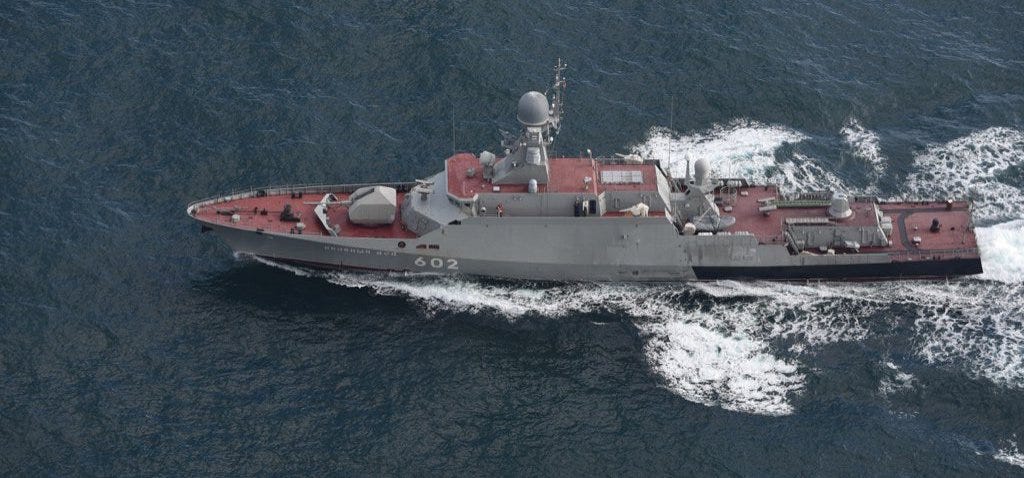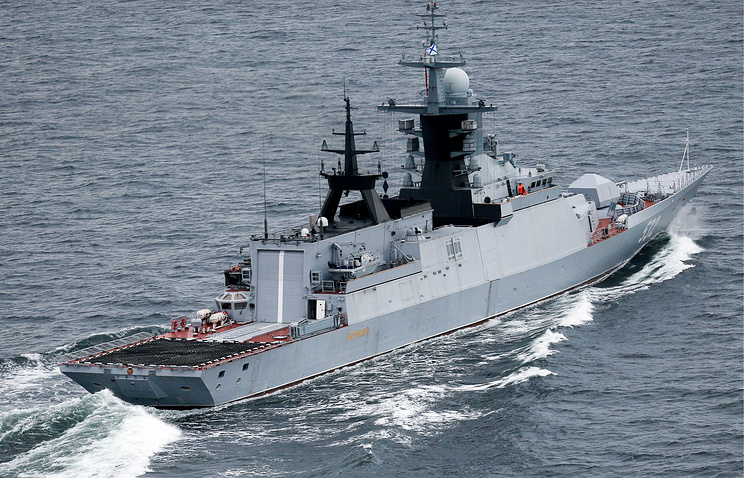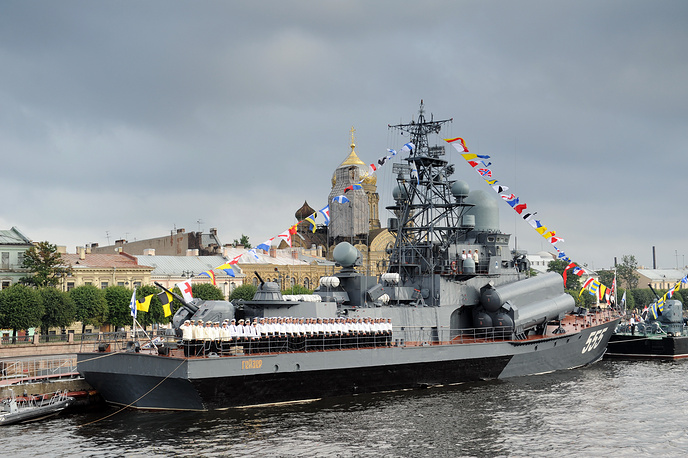Hindustani78
BANNED

- Joined
- Apr 8, 2014
- Messages
- 40,471
- Reaction score
- -47
- Country
- Location
12:38 Oct. 25, 2016
https://medium.com/dfrlab/missile-misdirection-bfd0c677443#.8sa3m622s
http://uatoday.tv/press/is-russia-shipping-nuclear-capable-cruise-missiles-to-the-baltic-792664.html
Ship movements in the Mediterranean and North Sea and comments posted online suggest that two Russian warships armed with long-range, nuclear-capable “Kalibr” cruise missiles are sailing to the Baltic — despite official statements to the contrary.
The Kalibr can carry either conventional or nuclear warheads, and its maximum range against land targets, according to Russian arms site arms-expo.ru, is 2600 km. This makes it a far more capable weapon than the land-based Iskander missile (reported range 500 km), whose recent deployment to Kaliningrad provoked tensions with the Baltic States and NATO (see our previous posts, “Troubled Waters” and “The Iskanders Have Landed”).
The Russian Navy’s new vessels
The ships in question are the “Zelenyy Dol” (hull number 602) and “Serpukhov” (603), classified as “Buyan-M”-class Small Missile Ships (Russian: Малые ракетные корабли, or МКР). They are among the Russian Navy’s newest vessels: both entered into service with the Black Sea Fleet at the end of last year, and were home-ported in Sevastopol. On 19 August, while steaming in the eastern Mediterranean, they fired their main weaponry for the first time in anger, launching three cruise missiles at targets in Syria. The Russian Ministry of Defense published video of the launches.
They returned to Sevastopol after this exploit, but in early October it was announced that they would return to the Mediterranean, with Black Sea Fleet spokesman Nikolai Voskresensky quoted as saying, “In the Mediterranean Sea, the Serpukhov and Zelenyy Dol are set to join the permanent operational task force in the distant maritime zone on a planned rotational basis.”
On 5 October, both ships were photographed by ship-spotters as they passed through the Bosphorus a mile apart:
The general expectation was that they would head south for the Syrian coastline. Indeed, Kremlin propaganda outlet RT stated that the two ships “will assist in the military operation against Islamic State”.
However, naval blog site 7fbtk.blogspot.com challenged that account, quoting a 16 September statement from the Main Intelligence Directorate of the Ukrainian Ministry of Defense as saying that the two ships were due to be transferred to the Baltic. The MoD had said that the ships were due to head north via Russia’s inland waterways in late September; that deadline was missed, the transit never materialized and the claim was never widely reported.
But the blogger revived it, quoting open sources as saying that the ships were expected in Malta in mid-October, and added, “Having travelled that far west with a tug, it seems even more likely that Serpukhov and Zelenyy Dol will continue to the Baltic Sea. But the small patrol combatants will require several port calls (Ceuta? Lisbon?) and/or logistical support by a naval tanker. The Baltic Fleet would benefit greatly from the introduction of Kalibr-armed warships. While Kalibr-capable ships and submarines are tested in the Baltic Sea before being transferred to the Black Sea Fleet, the Baltic Fleet currently has no Kalibr-capable ships or submarines in its own permanent inventory.”
Away from Syria
Sure enough, on 9 October, ship-spotters in Valletta, Malta, posted images of the two ships, together with a tug known as SB-36, moored in the Grand Harbor. Website maltaspotting.com, which regularly monitors ship movements in the harbor, confirmed their presence and predicted a departure of 12 October.

Russian Navy BSF's Buyan-M Class Corvettes 603 Serpukhov & 602 Zeleny Dol (in order of transit, 1 mile apart) southbound on the Bosphorus

RFS Zelenyy Dol in the North Sea, 23 October 2016. Photo: Royal Netherlands Navy.






















